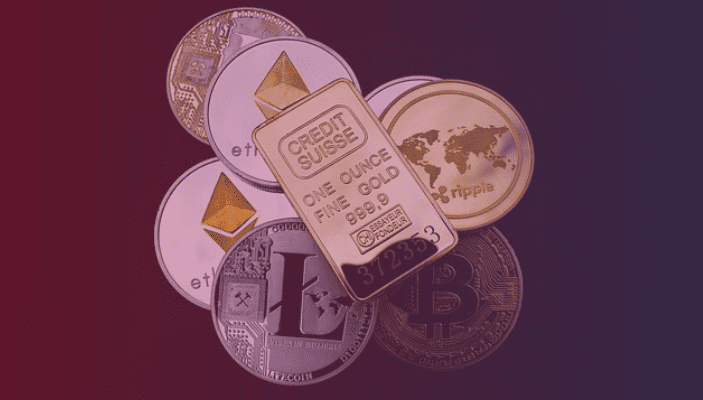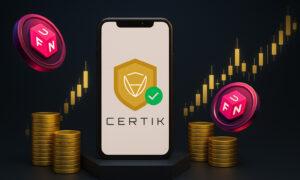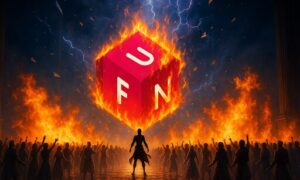The cryptocurrency market is rapidly changing as new terms emerge along with their technological backing. But no matter how advanced blockchain technology becomes, the fundamental pillars of the market are the token and the coin. The irony is that many market participants do not yet know the difference between the two terms and may even consider them interchangeable. That’s a pity, since the cryptocurrency coin vs token dilemma has been around for years and can never be explained too much.
What Is a Token?
The token is the most basic form of asset available on the crypto market. Tokens are digital assets issued by a project on a blockchain. Their main purpose is to serve as a means of payment for goods and services within the framework of the project ecosystem. They also grant their holders the right to participate in the network by joining groups or even voting, much like shares on the financial market.
There are two types of tokens: utility and security tokens. Utility tokens are exactly what their name implies: They are used as a means for achieving a goal, much like a token for the subway, which, once entered into the machine, gives the holder the right to take a ride. But sometimes, tokens hold no value at all and emerge from memes or famous people, like the Dogecoin or Trumpcoin.
On the other hand, there are also security tokens, which represent of a project’s share and give their holders the right to expect profits in the future, much like securities on the financial market. Security tokens are quite a tricky lot, since they have to be approved by higher financial authorities and are always under extreme scrutiny from the SEC.
The most common abbreviation on the market is ERC-20, and many people would ask “What are ERC-20 tokens?” The ERC-20, or Ethereum Request For Comment (20 stands for the number assigned to the standard by the programmers) is the most popular programming standard used for smart contracts on the Ethereum blockchain. The ERC-20 standard is extremely versatile in its smart contract architecture and considers each action a verifiable transfer of the token to a destination address. This feature of ERC-20 tokens allows them to fully utilize the immutability and transparency aspects of blockchain technology.
The ERC-721 is much less frequently encountered, but it’s a free and open standard as well. It’s used for building non-fungible tokens on the Ethereum blockchain. Unlike ERC-20 tokens, which are all the same in their standard, each ERC-721 token has a unique nature. The unique nature of the ERC-721 standard is perfect for the creation of unique tradable content, such as gaming assets and other items that gain value through their nature. Many crypto-games rely on this standard for their operation. The first project to use the ERC-721 standard was CryptoKitties, where each kitty is unique and tradable.
There are many other standards on the market with their own unique characteristics, such as the ERC-223, which is a variation of the ERC-20 with added functionality, and the ERC-777, which is an improved version of the ERC-20. Also in Stablecoins you will find USDT ERC20 which you can SWAP between USDT Omni on a USDT ERC20 exchange.
What Is a Coin?
Coins are the firstborn of the crypto market and have the greatest value. Coins are the original digital money, built on the basis of cryptographic technologies with blockchain at their core. Just like fiat money, coins were designed to hold value and store it over time. The blockchain serves as a substitute for the real-life economic system and provides transparency and fraud-free operation for coins. Coins have many of the same characteristics as fiat money, since they are fungible, or divisible into smaller portions, acceptable as an equivalent to money at outlets for goods and services, portable like cash or bank cards, durable thanks to their electronic nature, and have a limited supply, or emission, which ensures their value through scarcity. Bitcoin, Ripple, Litecoin, Monero, and many others are coins.
Here are two of the main characteristics of coins that set them apart from all other assets:
- Coins can be mined from a limited emission pool, and they can be sent or received like ordinary money.
- Coins are meant to act only as money and are not used in any particular project as an asset for receiving goods or services provided by that project.
The Difference Between Coins and Tokens
If we were to sum up the crypto token vs coin dilemma, then we would have to look at coins and tokens together.
Coins are money that does not act within the framework of any one project as a means of obtaining goods or services, they act as a storage of value and either appreciate or depreciate over time, and they can be mined from a limited issuance pool.
Tokens cannot be mined, and they act as either utility assets granting access to goods and services within the framework of a specific project or as a security or the equivalent of a share of a project. They are non-fungible and can be bought at exchanges from the issuing projects. Most tokens are pre-mined and cannot be mined beyond the limited issuance.
Coin Vs Token: Where to Buy?
Coins and tokens can be bought and sold on exchanges. The most popular means of buying tokens and coins is through US Dollars or other coins. Tokens generally cannot be exchanged for other tokens, since exchanges operate with coins or fiat currencies, like the US dollar. To buy a project’s tokens, traders must either use fiat currency or buy coins and then buy the tokens. The same applies for coins, which can only be bought with other coins or fiat currency.
There are dozens of exchanges on the market, but one of the most convenient is Xena Exchange. It offers a wide variety of trading pairs, including BTC, LTC, Ether, and other more exotic and advanced trading assets, such as perpetual contracts on the highly anticipated GRAM token. We invite everyone to visit Xena Exchange and try it out to evaluate its convenience and broad range of functions.
| Explore the opportunities | Register on Xena Exchange right now |
Summing Up
The ICO phenomenon swept across the market in 2017–2018, but only a few market participants actually thought that ICOs (initial coin offerings) were different from ITOs (initial token offerings). Most projects that assumed the title of ICO did not offer coins but rather tokens. Therefore, before launching an asset, a project must first decide what its asset is – a coin or a token.
If we consider the ICO token vs coin dilemma as a whole, it’s important to understand that only coins bear value like money in general, while tokens are confined to a certain project and only grant access to its goods or services.
Xena Exchange is determined to provide the highest-quality educational information for both novice and seasoned traders and crypto market enthusiasts. We welcome anyone and everyone to read our materials and join our exchange to discover the full potential of crypto trading.



































